The best way to recapture the belle époque freedom of the open road
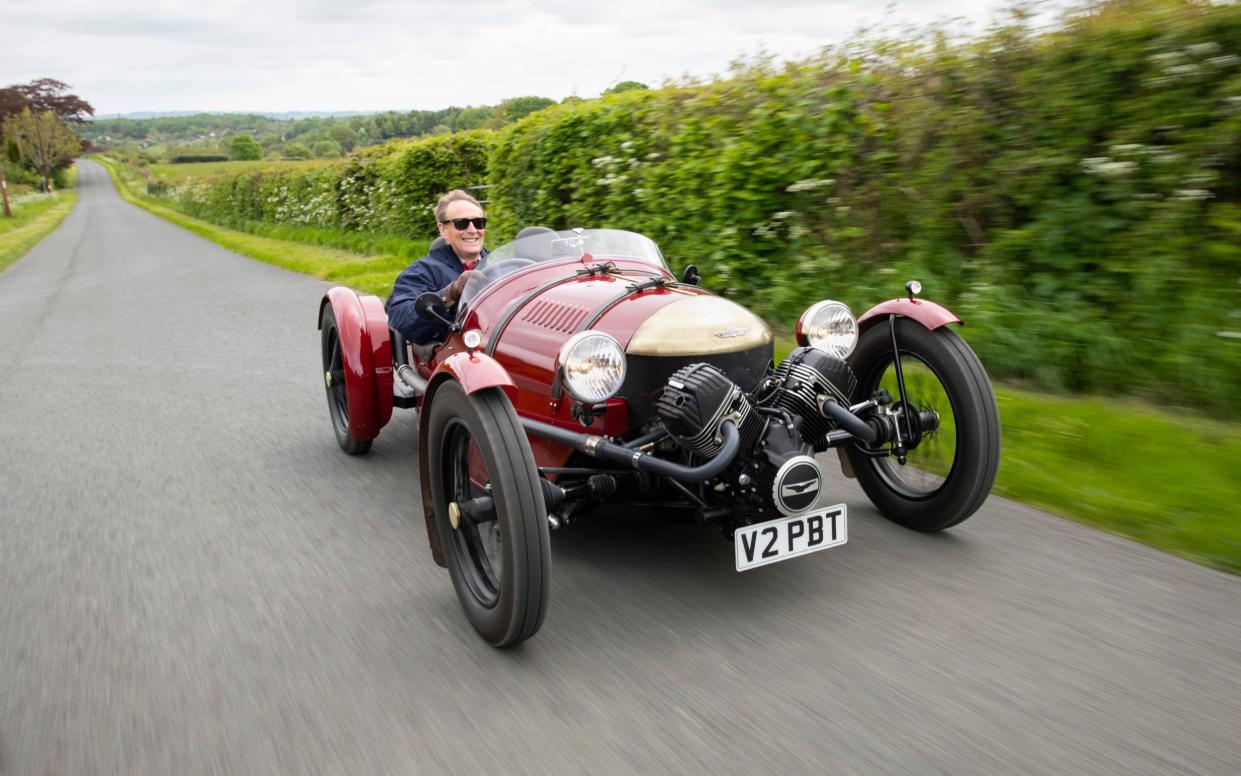
- Oops!Something went wrong.Please try again later.
With their affordable, mass-produced cars, Henry Ford and Herbert Austin put paid to the spindly pre-First World War cyclecars, also called tricars or voiturettes.
Crude and something of a cross between a light car and a motorcycle, with usually only two seats and vestigial weather protection at best, these devices paled in comparison to the relatively commodious comfort of a Ford Model T or Austin Seven. Even the post-Second World War boom in cheap-to-run cyclecars was, as David Thirlby points out in his book Minimal Motoring, somewhat limited even if they’d gained a “microcar” tag by then.
Watch the annual London to Brighton Veteran Car Run or visit the Bubblecar Museum in Lincolnshire and you’ll see both generations of these devices in all their splendour and single-mindedness. They might not be particularly practical, but they certainly look like fun.
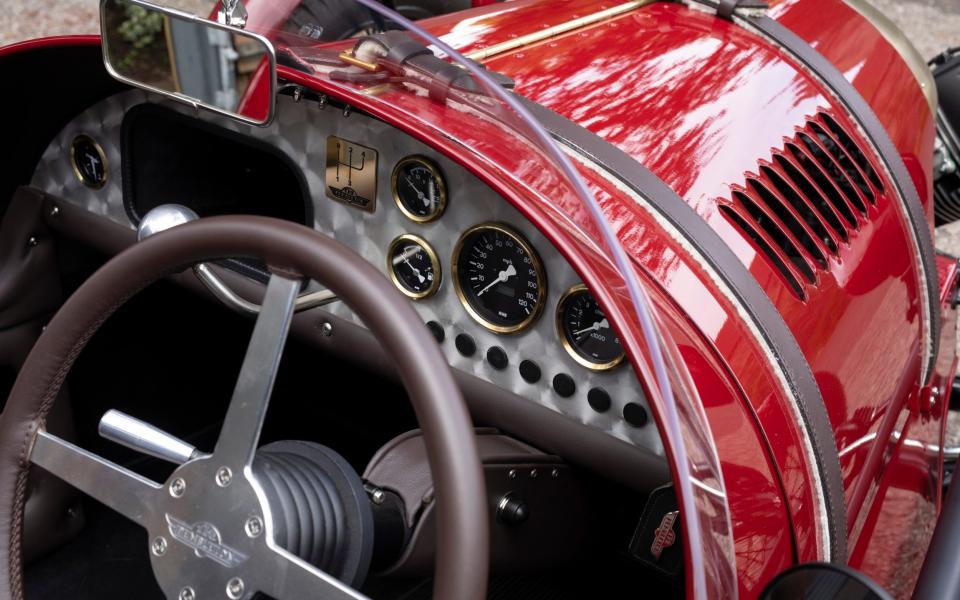
Alternatively, you could take a trip to Bayton in Worcestershire, to the home of the Pembleton Motor Company, where in a series of immaculately converted ancient barns and stables, Guy Gregory and his team create cyclecars that perfectly recapture the belle époque freedom of the open road – one that wouldn’t be at all unfamiliar to Kenneth Grahame’s Mr Toad.
In 2019 I tested the Pembleton V-Sport three-wheeler and loved the craft that made it – and the story behind it. Almost a quarter of a century ago, Guy’s father Phil produced his first three-wheeler to circumvent the pricing structure to board the Dún Laoghaire ferry, naming the trike Pembleton Grasshopper after the caravan that had donated its aluminium bodywork to the vehicle.
I also loved the driving experience. Gregory had re-engineered his father’s trike using computer-aided design to cut panels from blanks for accuracy. He had negotiated with the Italian giant Piaggio for access to the charismatic Moto Guzzi V-twin engine, which was mated to a four-speed and reverse Citroën 2CV gearbox/transaxle.
There was nothing standing between you, the driven front wheels and the lovely twisting roads of the British countryside: no lane-keeping assistance, no power steering, no downloads from the Cloud, no anti-lock brakes or traction control, no roof. Nothing.
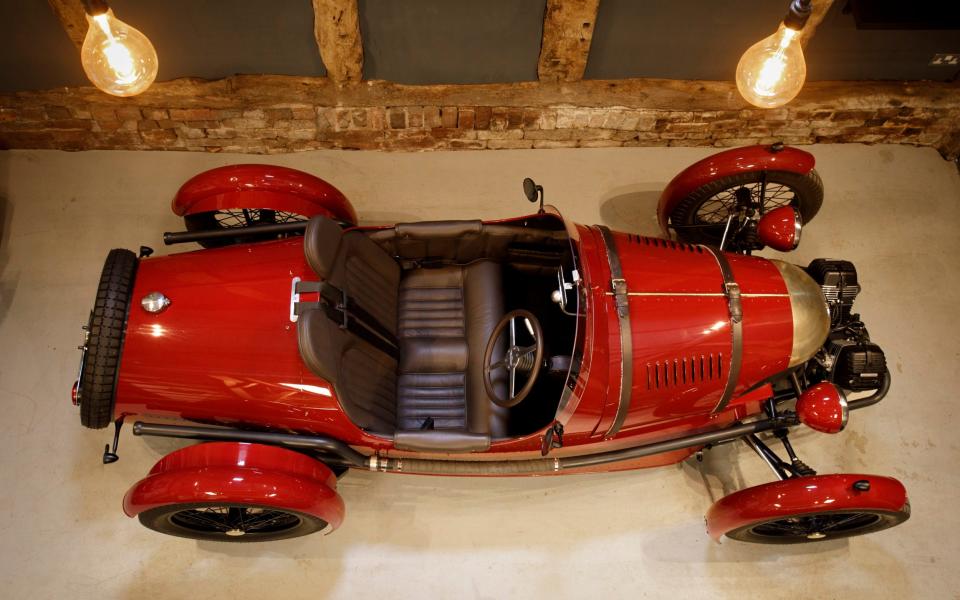
As an antidote to modern motoring, it was complete, but as a cyclecar it had one wheel too few and that might put off potential clients. Gregory expressed his desire to make a four-wheeler at some point, again based on his father’s ideas and called the Brooklands.
While the Spartan nature of the Pembleton V-Sport meant it was comfortably shielded from the car industry’s crippling semiconductor shortage, Covid, plus the need to convert more barns for the production of the car, slowed development. Pull back the ancient wooden doors of the new Lilliputian showroom, however, and it’s clear the effort and delay were worth it.
With a spare wheel set in the back of the body, the T24’s bodywork style is known as “barrel-back” in Morgan circles (since it resembles the end of a barrel if the spare wheel is removed), not as pretty as an arched “beetle-back” design, but the inclusion of a spare wheel makes it more practical.
Yet this car somehow surpasses the potentially clumsy lines of such an arrangement, almost as if during its gestation it had tripped over the golden ratio and crashed into the feng shui mountain.
Perhaps it’s the way the spare sits outside the circumference of the body, or how the rear mudguards have perfectly judged fillets visually linking them with the rest of the fuselage, as well as providing more protection from the spray thrown off the old-style 18-inch Longstone tyres.
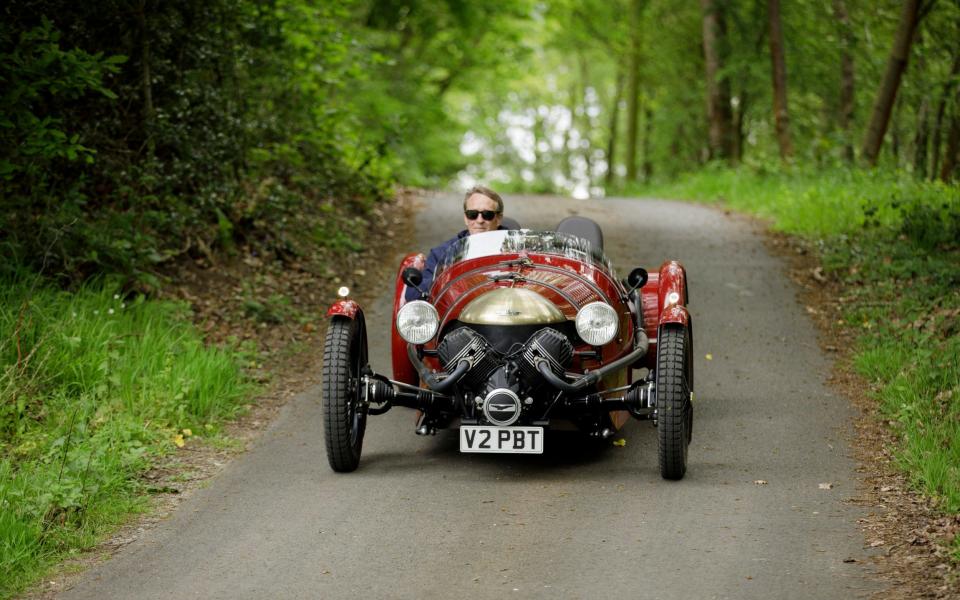
Maybe it’s the beautifully applied solid claret paintwork (you’ll want paint, as the bare aluminium bodywork shown in the brochure is almost too much) and the domed-head rivets running along the body, but it really is a wonderful-looking device.
With its rear track slightly narrower than the front, the T24 owes as much to a Frazer Nash, a GN or an Amilcar as it does to anything you could spend money on today.
Mercifully avoiding the digital and LED in the lighting and dashboard also confirms a considered hand at the drawing board; this might be a new car, but its roots lie far in the past, even down to the tiny tell-tale sidelights atop the front cycle mudguards.
And while there’s no hood, just a choice of tonneau covers, there is a boot behind the seats, all 195 litres of it. It can even be carpeted, provided you tick that option.
On the front, the fuel-injected Moto Guzzi 90-degree V-twin engine is attached to a custom flywheel and clutch assembly feeding the Citroën transaxle, which is controlled in time-honoured fashion by an alloy lever protruding from the dashboard just like the 2CV, though in this case Gregory has sourced alternative gearing that raises the Citroën’s ludicrously-low first, second and third ratios.
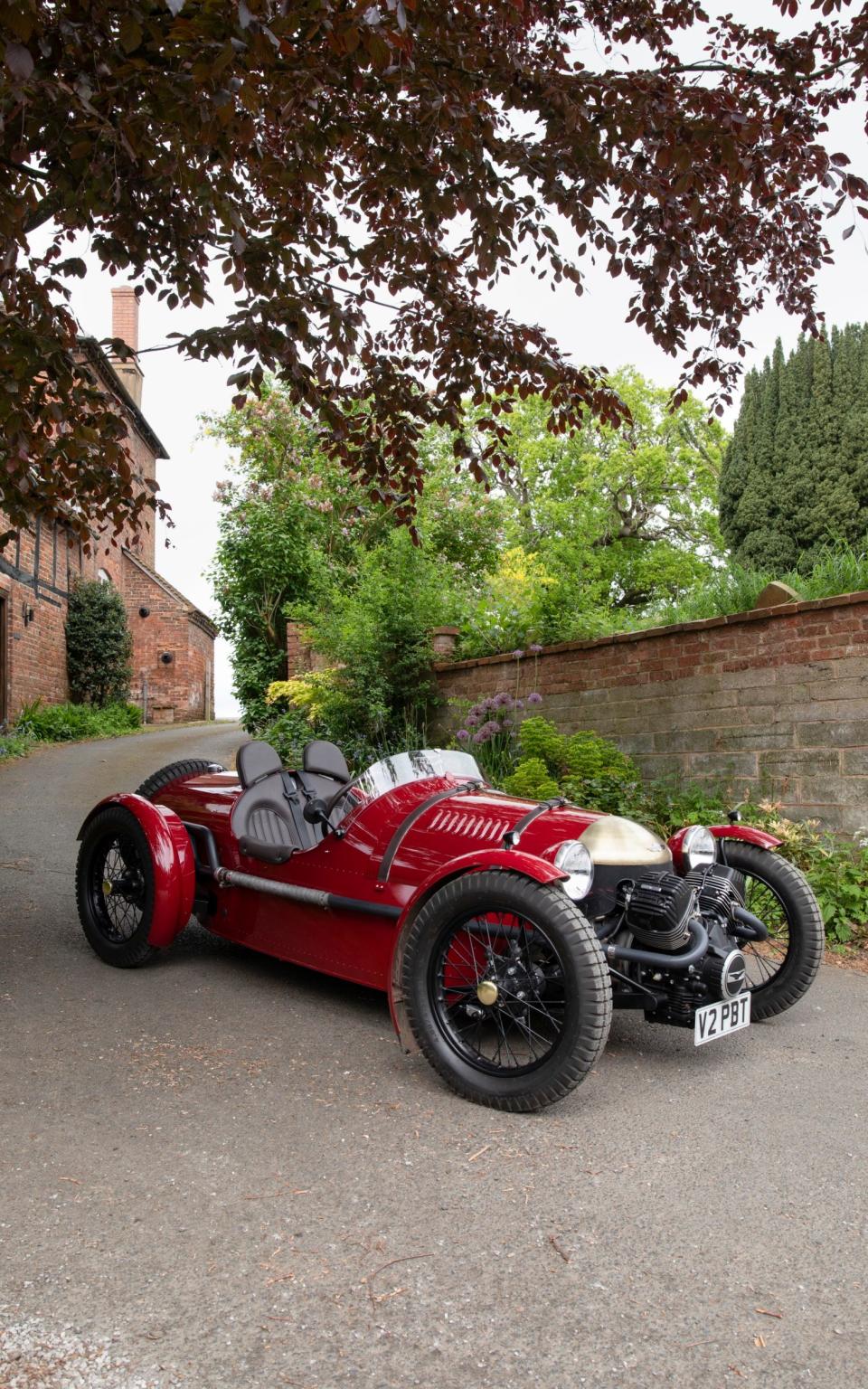
There are two engine options: the 744cc, 52bhp/44.3lb ft unit as per the three-wheeler or, new for this car, an 853cc, 79bhp/59lb ft engine, which adds another £2,880 to the £39,594 VAT-inclusive price.
Expensive? Of course it is, but it’s also hand-built, beautifully specified and unlike (almost) anything else. In a world where looking remotely different on wheels can easily separate more than £100,000 from your wallet, the T24 seems like a cheap way into exclusivity (Pembleton builds only 10 cars a year, though they would like to make more).
The larger, bored-and-stroked V-twin option takes the power-to-weight ratio from 144bhp per tonne to 218 (it only weighs 361kg, one of the lightest cars on sale).
What’s more, the comprehensive options list isn’t simply an exercise in parting you from your money. The waterproof leather upholstery, for example, is £1,215, while none of the trim packs (Drivers, Leisure, Touring and Luxury) heads far into four figures.
To get behind the wheel, you slip in, preferably from the passenger side, waggling across to get your legs under the four-spoke steering wheel, then either side of the steering column.
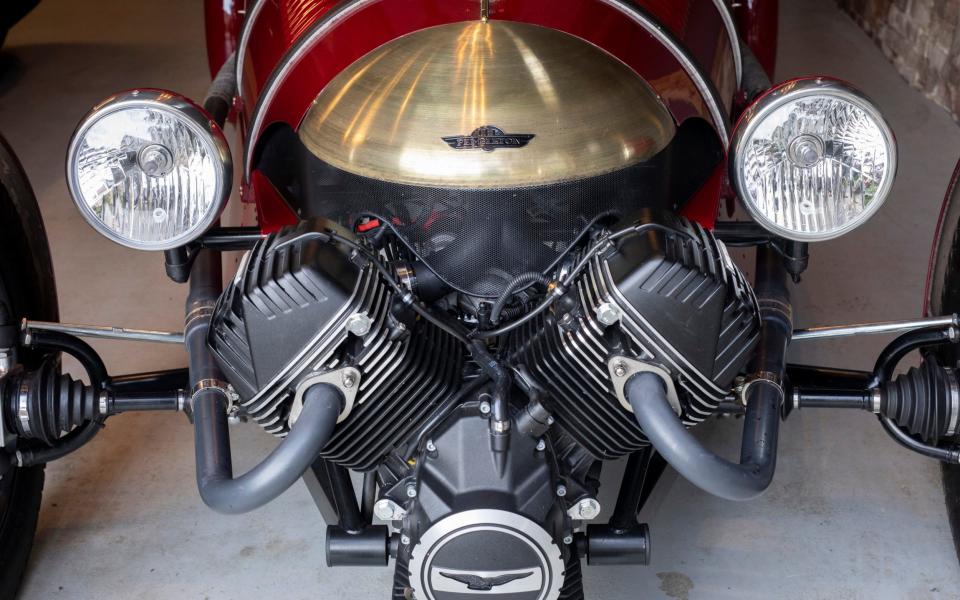
Sounds like a tight fit and it is; you wear this car like a wetsuit. But while I’m 6ft and broader than I’d like to be, I found the driving position to be perfectly comfortable, even if the large-footed will have to adopt daintier footwear.
Those obsessed with car as software communications device should look elsewhere. There’s an ignition key, a starter button, a switch to ignite the wing markers and a handbrake by your right calf. It puts the “min” into minimal, though the glovebox is huge (13 litres) and has a sneakily contemporary USB phone-charging slot within.
The suspension is fully independent, with horizontal springs and dampers actuated via pullrods, while the brakes are all discs, inboard at the front.
The air-cooled Guzzi engine clatters into life, its virtually unsilenced exhausts biffing and batting as the oil warms. You don’t have to drive it like a sort of automotive vuvuzela, however; the accelerator pedal works both ways if you encounter horses or other vulnerable road users, but my goodness the noise is spine-tingling.
First gear is a tug left and back, the clutch is light and positive and with a kerb weight unheard of since Colin Chapman’s earliest days establishing Lotus, the T24 skedaddles down the road, its 5ft 3in width making it simple to dodge the worst potholes.
The wind is in your hair as well as your ears and teeth, so the experience is all-encompassing. The extra 109cc and almost 15lb ft of torque means you’ve no need to tug at the gear lever; once into the high third you’re really motoring, and fourth is really only a cruising ratio. This is a comfortable and beautifully balanced machine, though.
“We spent loads of time on the suspension,” says Gregory, “particularly the damper bump and rebound settings. We wanted a charming car at a lower speed. The challenge was to make it fun but also comfy and compliant.”
So the steering is gentle, well weighted but compliant. It would be easy to make the cornering darty and slightly scary with rapid responses to the wheel, however the steering feels deliberate and measured.
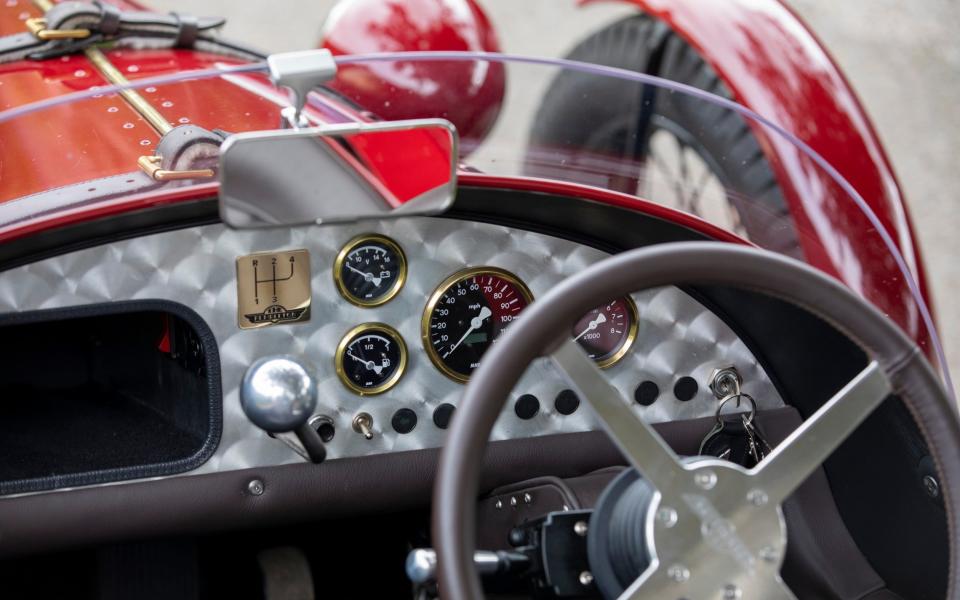
You can see the wheel-mounted mudguards moving up and down with the road surface and you’re skimming along like a hunting swallow, the road and hedgerows blurring in your peripheral vision. It stops nicely, too, the pedal ratio providing progressive stopping with a decent initial grab at the top of the movement.
This is an enchanting machine, which keeps the vintage look of the firm’s three-wheeler V-Sport but adds a degree of practicality and perceived safety. It was hard to leave the lovely church-side premises of Pembleton. Even harder, though, to leave the T24, looking so right and inviting outside.
This is driving at its most elemental and who cares if rain clouds are gathering – somehow the world seems filled with possibility and fun if you have a set of Pembleton keys in your hand.

